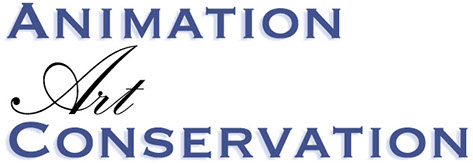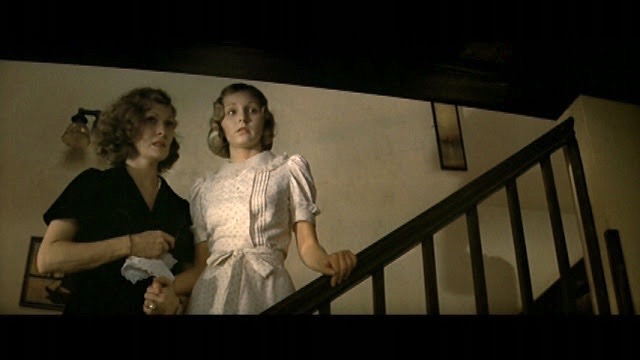
COPYRIGHTS AND RESTRICTIONS AND CONDITIONS OF THIS WEBSITE
HERE IN THE CITY OF ANGELS
© 2020 Ron Barbagallo
HERE IN THE CITY OF ANGELS
“It is my belief, dear Watson, founded upon my experience, that the lowest and vilest alleys in London do not present a more dreadful record of sin than does the smiling and beautiful countryside.”
- Sir Arthur Conan Doyle vis-à-vis Sherlock Holmes, his literary doppelgänger.
The idea that the ego unbounded infests places that are not apparent is key to the Sherlock Holmes novel The Adventure of the Copper Beeches, and is key to understanding Chinatown, screenwriter Robert Towne's essay about Los Angeles. Towne observes that behind the smart fitted haute couture, sunshine and tropical palm trees, Los Angeles is a place made up of small pockets that are isolated from the whole. To illustrate how corrupt things can be in places where the public is too disconnected to see them, Towne relies on this — language.
His screenplay for Chinatown and his essay rest solely on this — that there is literally no word in the English language to describe the level of depravity one's ego will take you here in the city of angels; and that there are no limits on what someone in power will lust after and try to covet.
Towne's climatic scene which punctuates this is layered with best intentions, exasperation and violence. Acting out of frustration and attempting to get to the truth, Jake uses battery to get Evelyn Mulwray to tell him what the problem is. And the problem is this — there is no word for her to summon. No word to describe the "daughter-granddaughter" who her father's ego needs to covet next.
While about incest on its top strata, Towne's essay on Los Angeles is much deeper than that. It echoes what Sir Arthur Conan Doyle was saying about the countryside — that the lowest and vilest places in Los Angeles do not present a more dreadful record of sin than does the smiling and beautiful people who use their job titles to try to take things that are clearly inappropriate. And that any effort to talk about this as a problem is futile because the conspiracy is pervasive and the fear of retribution system-wide.
Evelyn Mulwray and the incarnation of when the corruption of power becomes corporeal.
All images are ©2020 Paramount Pictures. ALL RIGHTS RESERVED.
This review is owned by © Ron Barbagallo 2020.
ALL RIGHTS RESERVED. You may not quote or copy from this article without written permission.
YOUR USE OF THIS WEBSITE IMPLIES YOU HAVE READ AND AGREE TO THE "COPYRIGHT AND RESTRICTIONS/TERMS AND CONDITIONS" OF THIS WEBSITE DETAILED IN THE LINK BELOW:
LEGAL COPYRIGHTS AND RESTRICTIONS / TERMS AND CONDITIONS OF USE
INSTRUCTIONS ON HOW TO QUOTE FROM THE WRITING ON THIS WEBSITE CAN BE FOUND AT THIS LINK.
PLEASE DO NOT COPY THE JPEGS IN ANY FORM OR COPY ANY LINKS TO MY HOST PROVIDER. ANY THEFTS OF ART DETECTED VIA MY HOST PROVIDER WILL BE REPORTED TO THE WALT DISNEY COMPANY, WARNER BROS. OR OTHER LICENSING DEPARTMENTS.
ARTICLES ON AESTHETICS IN ANIMATION
BY RON BARBAGALLO:
The Art of Making Pixar's Ratatouille is revealed by way of an introductory article followed by interviews with production designer Harley Jessup, director of photography/lighting Sharon Calahan and the film's writer/director Brad Bird.
Design with a Purpose, an interview with Ralph Eggleston uses production art from Wall-E to illustrate the production design of Pixar's cautionary tale of a robot on a futuristic Earth.
Shedding Light on the Little Matchgirl traces the path director Roger Allers and the Disney Studio took in adapting the Hans Christian Andersen story to animation.
The Destiny of Dalí's Destino, in 1946, Walt Disney invited Salvador Dalí to create an animated short based upon his surrealist art. This writing illustrates how this short got started and tells the story of the film's aesthetic.
A Blade Of Grass is a tour through the aesthetics of 2D background painting at the Disney Studio from 1928 through 1942.
Lorenzo, director / production designer Mike Gabriel created a visual tour de force in this Academy Award® nominated Disney short. This article chronicles how the short was made and includes an interview with Mike Gabriel.
Tim Burton's Corpse Bride, an interview with Graham G. Maiden's narrates the process involved with taking Tim Burton's concept art and translating Tim's sketches and paintings into fully articulated stop motion puppets.
Wallace & Gromit: The Curse Of The Were-Rabbit, in an interview exclusive to this web site, Nick Park speaks about his influences, on how he uses drawing to tell a story and tells us what it was like to bring Wallace and Gromit to the big screen.
For a complete list of PUBLISHED WORK AND WRITINGS by Ron Barbagallo,
click on the link above and scroll down.
INDEX OF SERVICES
The Ethical Method of Repair
The Attention is in the Details
the Lost and FOUND series
RON BARBAGALLO:


© Paramount Pictures